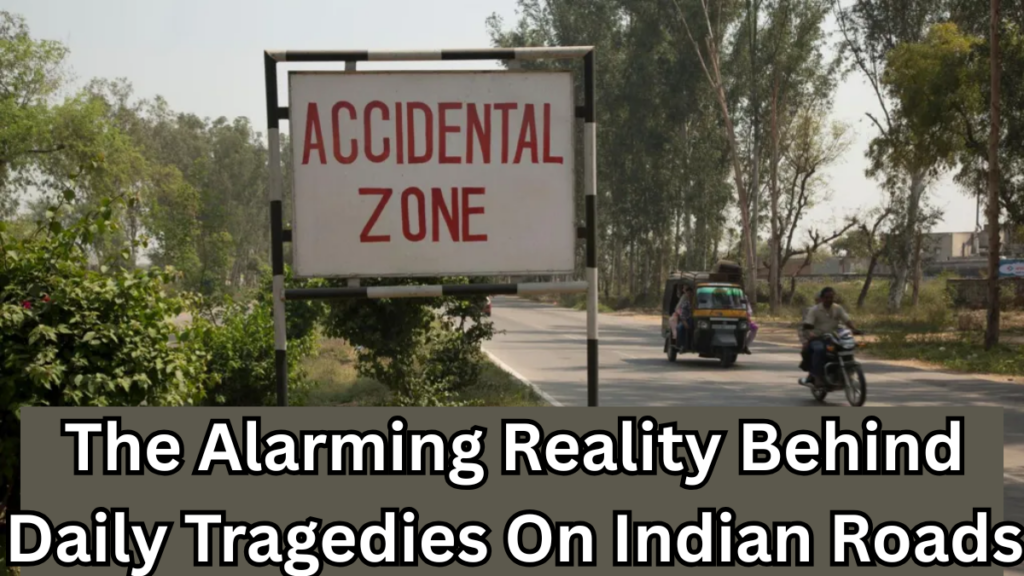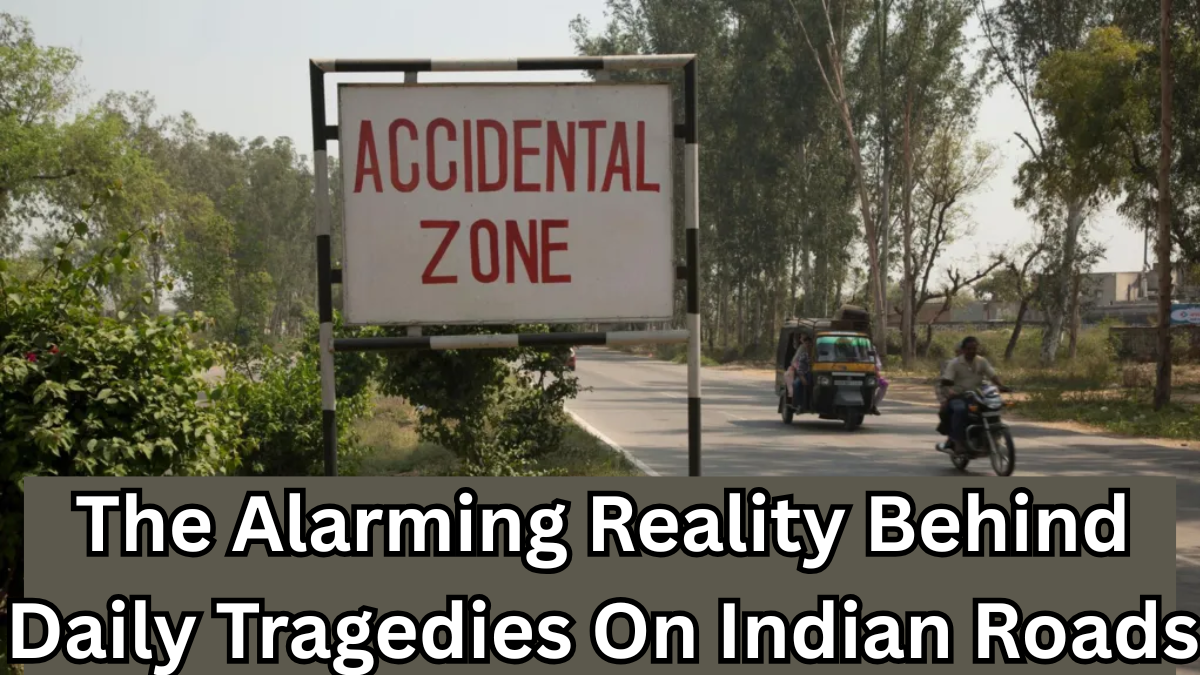Every morning, countless Indian families are jolted by devastating headlines — buses tumbling into gorges, pedestrians struck by reckless drivers, or two-wheelers crushed under heavy trucks. These aren’t just isolated incidents; they represent a mounting national crisis that demands urgent attention.

A Daily Death Toll That Shouldn’t Be Normalized
In 2023 alone, India lost over 172,000 lives to road accidents. That’s:
-
474 deaths per day
-
1 death every 3 minutes
-
Nearly 10,000 child fatalities
These aren’t just numbers — they represent lost futures, grieving families, and communities in mourning.
Who Are the Most Affected?
Here’s a breakdown of the major fatalities reported in 2023:
| Category | Fatalities |
|---|---|
| Children | 10,000 |
| Near schools/colleges | 10,000 |
| Pedestrians | 35,000 |
| Due to no helmet | 54,000 |
| Due to no seatbelt | 16,000 |
| Due to overloading | 12,000 |
| Unlicensed drivers | 34,000 crashes |
Speeding remains the single most prominent cause, followed by a dangerous mix of ignorance, carelessness, and infrastructure failures.
Why Are Indian Roads So Deadly?
The issue goes far beyond reckless driving. It’s rooted in poor road planning, weak enforcement, and infrastructure that simply doesn’t support safe travel for India’s 1.4 billion citizens.
Key Risk Factors:
-
Lack of safety gear usage (helmets, seatbelts)
-
Drivers without proper licenses
-
Overloaded vehicles
-
Wrong-side driving
-
Inadequate road design
-
Poor maintenance and signage
The Traffic Jungle: A Chaotic Mix
India’s roads aren’t just for cars and buses. They are shared by:
-
Motorcycles, scooters, and rickshaws
-
Pedestrians, street vendors, and hawkers
-
Animal-drawn carts
-
Stray animals
Add potholes, poor lighting, and inconsistent traffic signals — and the danger multiplies.
When Roads Themselves Become Killers
Even when drivers follow the rules, India’s roads often fail them.
Flaws in Infrastructure Include:
| Fault | Impact |
|---|---|
| Crash barriers poorly installed | Vehicles flip over instead of stopping safely |
| Medians too high | Cause tyre bursts and vehicle rollovers |
| Raised carriageways | Dangerous drops on rural roads after resurfacing |
| Narrow pedestrian zones | Forces people to walk on busy roads |
| Missing road signage | Increases driver confusion and accidents |
Are We Designing Roads to Kill?
Experts believe the problem isn’t just negligence — it’s systemic.
“The most important culprits are civil engineers… even road markings are poor,” – Nitin Gadkari, Union Minister for Road Transport and Highways
Despite guidelines for crash barriers, lane widths, and signage, non-compliance is rarely penalized. Contractors are paid by kilometers built, not by how safely those roads are designed or maintained.
Flawed Solutions: Widening Roads Isn’t Enough
Gadkari’s plan to upgrade 25,000 km of two-lane highways to four lanes sounds promising. But road safety experts caution that this could backfire.
“More lanes often just mean faster traffic — and higher risk,” – Kavi Bhalla, Road Safety Expert, University of Chicago
Indian roads often copy Western highway models, ignoring local realities like mixed traffic, pedestrians, and non-motorized transport.
The 5Es Strategy: A Ray of Hope
To tackle this complex crisis, the government is implementing the 5Es framework:
| Pillar | Focus |
|---|---|
| Engineering (Roads) | Improve infrastructure and black spot fixes |
| Engineering (Vehicles) | Encourage safer vehicle designs |
| Education | Awareness about traffic rules and safety |
| Enforcement | Stricter penalties for violations |
| Emergency Care | Timely response to accidents to save lives |
Success stories from 7 states that applied this framework show significant reductions in accidents on targeted stretches.
Development vs. Lives: What Should Take Priority?
Yes, India needs modern roads to power its economy. But at what cost?
“Development must not trample the rights and safety of pedestrians and cyclists,” – Kavi Bhalla
What’s urgently needed is a system of continuous learning and adaptation. Build. Evaluate. Improve. Repeat.
FAQs
1. Why is India’s road death toll so high compared to other countries?
India’s roads have a unique mix of motorized and non-motorized traffic, poor enforcement of safety laws, flawed infrastructure, and a general lack of public awareness about road safety measures like seatbelts and helmets.
2. What are “black spots” on Indian roads?
These are accident-prone zones identified by the government due to high fatality rates. As of 2023, 13,795 such spots were found, but only 5,036 have been rectified so far.
3. Can better road design really reduce accidents?
Yes. Proper road signage, correctly installed barriers, safer medians, and well-planned pedestrian areas can significantly reduce crashes and fatalities.
4. Is upgrading to four-lane highways a viable solution?
Not necessarily. Without matching safety measures, wider roads often lead to faster driving, increasing the risk to vulnerable road users like cyclists and pedestrians.
In Conclusion:
India stands at a crossroads — quite literally. The country must choose whether to continue its rapid infrastructure expansion without safety checks, or build a future where roads serve everyone — not just the fastest, but the safest.
Click here to learn more
Pari is a passionate writer known for captivating stories that blend imagination and reality. Inspired by travel, history, and everyday moments, Pari crafts narratives that resonate deeply with readers.




